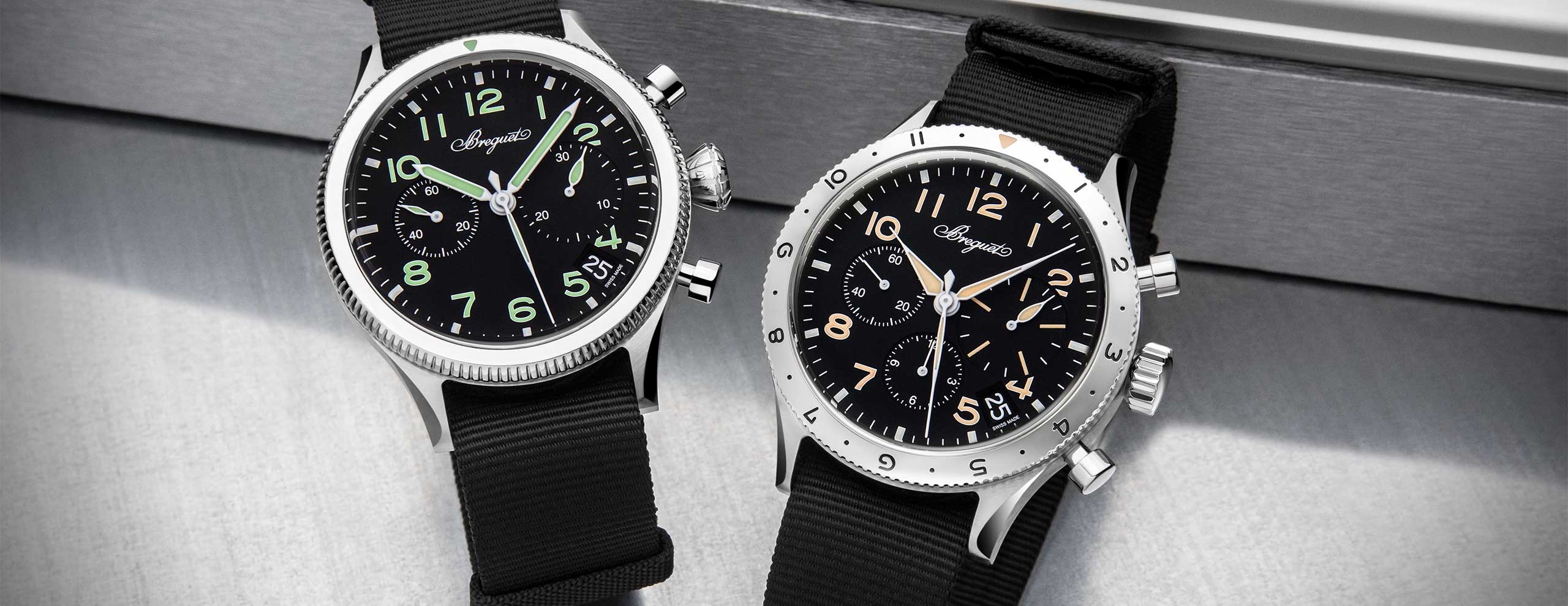Contrarian: The New Breguet Type XX and Its Much Discussed Date Window Are Awesome
Apparently the people who follow me on Instagram
@wei_koh_revolution are amused each time I go on a rant. If that’s the case, sit back, strap in and prepare to hopefully be entertained. Let’s get this straight, so we don’t have to waste that most precious of commodities: time. Yours and mine. The date window in Breguet’s new Type XX in both the military and civilian versions not only doesn’t bother me, but I like it. Why? First of all, it is a practical feature on any modern timepieces meant to be worn 24/7 in the real world. When I check into a hotel, or when I am planning my week, I like being able to check the date on my wristwatch. What’s that you say? How dare I? The addition of a date is an affront to the design purity of a military timepiece and its pure instrument-like iconography?
Well, that’s my point. I don’t need a military instrument because I am currently not serving in the military — though, like all Singaporean men, I did my two-and-a-half years of national service, performing duties critical to our national security. Like bayoneting papayas, endlessly cleaning my M-16, and trying to avoid ghosts in the bunkhouse. But today, I am not engaged in some vital occupation like launching fucking rockets where I need an incredibly precise, pure time-measuring tool watch. What I am is a watch nerd whose eyesight is increasingly failing, and who’s battlling the a body that wants to balloon into Botero-like proportions.
As I live in the real world, my desire is for a contemporary watch. Sure, it’s nice if it’s steeped in military- or tool-watch lore, like the Blancpain 50 Fathoms MIL-SPEC I wear. But I feel no need to intentionally discard the date because, let’s face it, I am not in the fucking Special Forces. Or some crazed survivalist who sleeps with a cocked Les Baer .45 caliber 1911 pistol under my goose duvet. I am a fat, middle-aged journalist with a bum ankle and a sausage dog. And, I like my contemporary watches to suit my existence in the real world.
That’s right — I just championed that most wrongly vilified of horological indications known as the date, and I stand by it. Because I grew up in the ’80s and ’90s, before the era of the iPhone — thank God for that — and the things I witnessed in the seedy but transcendent nightclub scene in New York are far better off as memories than compressed video files waiting to rear their possibly libelous heads. Back in the day, having a date on your watch was hugely pragmatic. And even now, it still saves me the effort of having to reach into the chest pocket of my Cifonelli blazer to fumble with my phone.
In fact, I would go so far as to say that the date window and I have had a love affair that stretches back to very first wristwatch I was ever given: my uncle’s 1950s Rolex DateJust. That’s right, don’t forget that the world’s mightiest watch brand owes a large part of its success to popularizing the quick-set date.
To me, date windows are just downright awesome and the current inane trend of rejecting them because you think a dial with a date is not “military enough” sounds like the type of thing that only someone who has never served in the military would say. I love the date, and everything it has come to represent, which stands in militant opposition to the vegan-adjacent, spiritual, fine-line tattooed, vin-jaune-drinking, overly educated yet intentionally low-earning anemic hipster keyboard warrior who is vigilantly scouring the internet to vilify any effort to make modern watches actually useful and pragmatic by, God forbid, adding a date.
To your statement, “Hey man, a date window is totally wrong for a military watch, man,” my response is: “Hey man… Tell me which military was it that you served in where you made these astute observations, motherfuckaaaa?” And I’ll say it with a Leslie Chow from The Hangover tonal inflection.
OK. Now that I’ve gotten all that off my chest, let’s get started on my thoughts on the new Breguet Type XX. But before that, so that I can act like an actual journalist rather than an overly opinionated and undereducated Instagram pundit, let’s first identity four eras of importance for the brand, Breguet.
The first is, of course, the late 18th and early 19th century that was the era of Abraham-Louis Breguet, the greatest watchmaker of all time. Yes, I know there are others like Christiaan Huygens, John Harrison, Jean-Antoine Lépine or Antide Janvier who were just as brilliant. But Huygens was more a physicist and scientist. Harrison and Lepine were more renowned for their individual accomplishments — respectively, H4 the world’s first precision marine chronometer featuring its incredible 7½-second remontoir d’égalité; and the world’s first suspended gear train that brought an end to the era of the pillar-style movement. Then there’s Janvier who was a genius, but was not able to translate his intellectual brilliance into anything like the commercial success Breguet had.
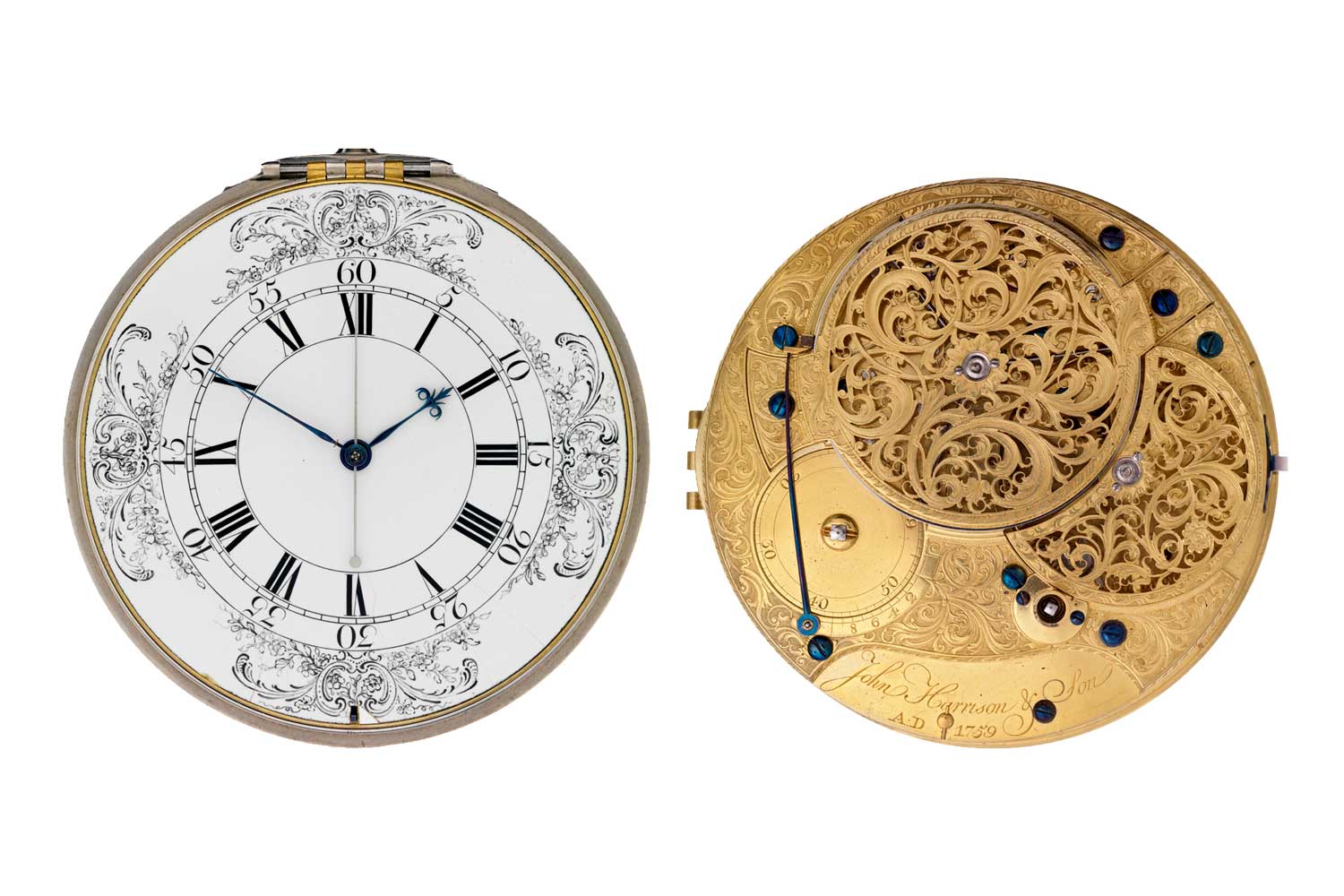
John Harrison’s prize-winning H4, the first true marine chronometer and one of the most important timekeepers ever made
So let’s agree that as far as watchmaking goes, Breguet was the GOAT.
Amongst his accomplishments were: the world’s first self-winding watch, also known as à secousses, the Perpetuelle; the world’s first minute repeater to use wire gongs; the world’s first anti-shock system for watches, which he named pare-chute; his eponymous overcoil which massively helps concentric breathing of the hairspring; the natural escapement – a double-wheel escapement created to function without lubrication, which has inspired François-Paul Journe, Kari Voutilainen and Laurent Ferrier to develop their own modern variations; and of course, the legendary tourbillon or “whirlwind”, a device that he patented in 1801, which places the escapement, hairspring and balance inside a cage that rotates on its own axis to compensate for errors caused by gravity.
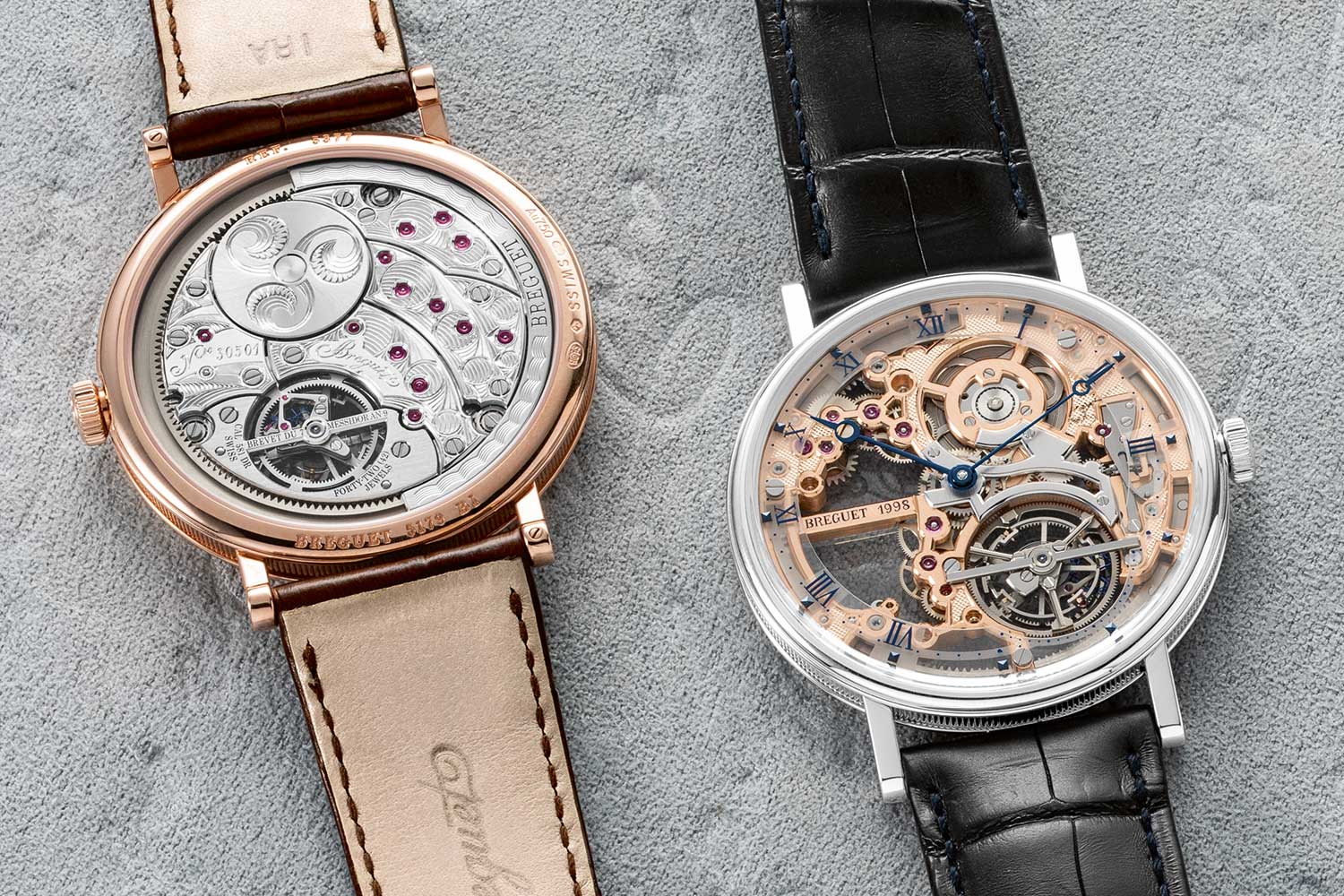
The legendary Breguet tourbillon or “whirlwind” (Image © Revolution)
The second era stretches over the mid-20th century when the brand was owned by the Brown family from England. It was during this time that Breguet created the Type 20 pilot’s watch for the French Air Force, and a civilian version of the watch named the Type XX.
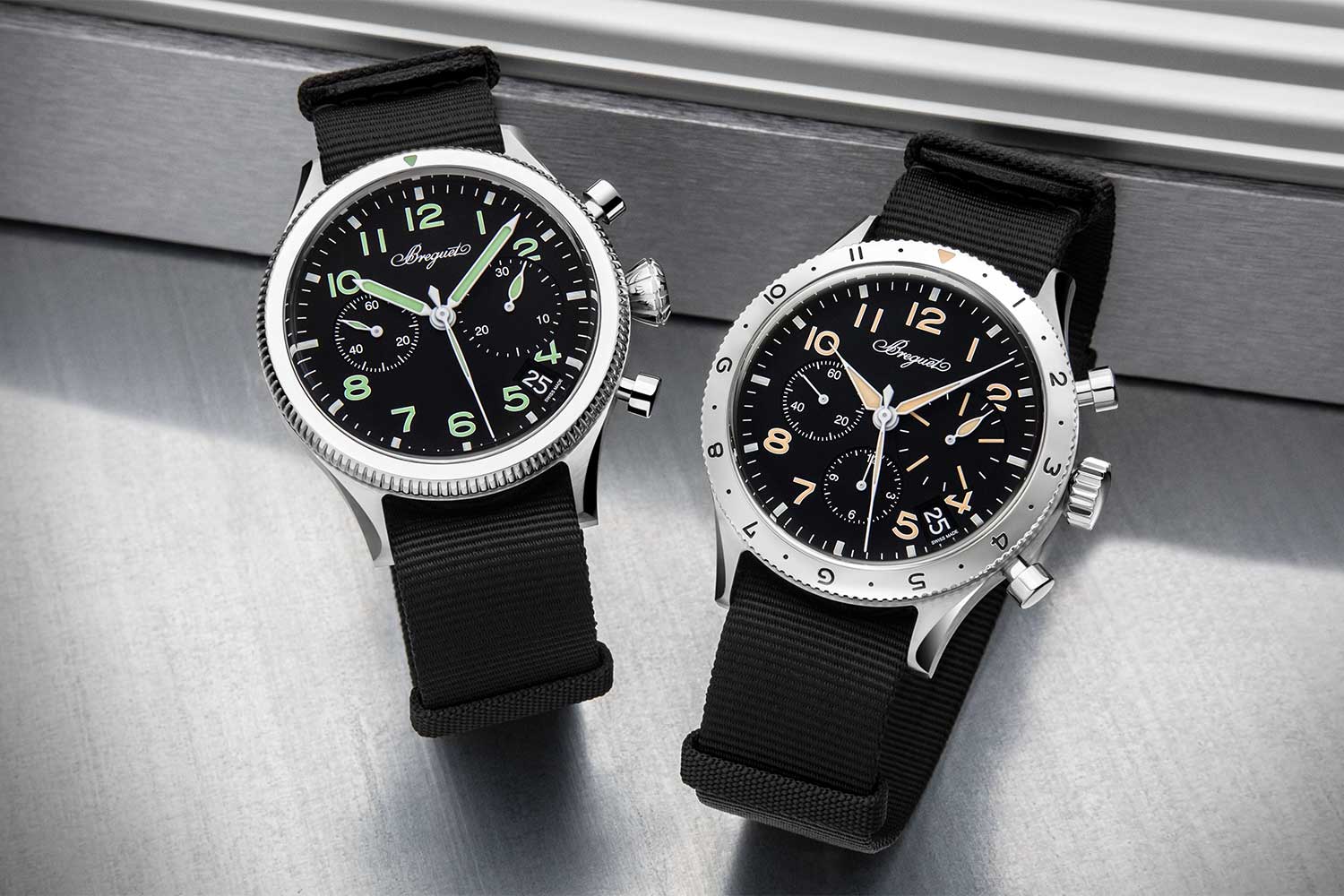
Breguet Type 20 Chronographe 2057 & 2067
The third era begins in 1976 when the Chaumet Brothers moved Breguet from France to Switzerland’s Vallée du Joux and tapped a then-unknown young watchmaker named Daniel Roth to reconnect the brand to its 18th-century roots.
And the last important era belongs to that of the incredible Nicolas G Hayek who bought the brand in 1999 and elevated it back to its position of horological greatness. Among the watches created under his leadership were the Marie-Antoinette No. 1160 pocket watch, as well as the wonderful souscription watch-inspired Tradition collection. Everyone still with me so far?
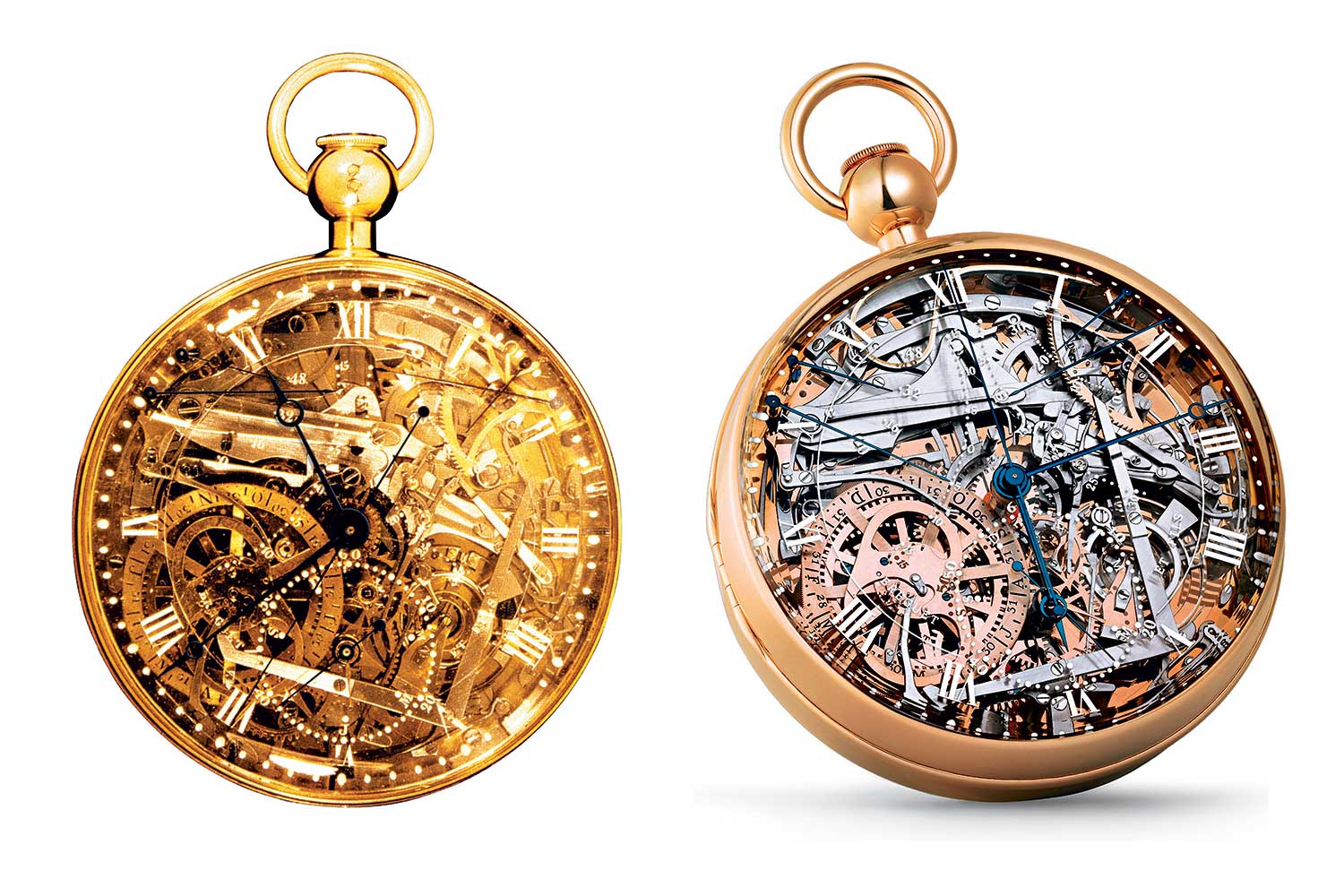
(From left) The Original Marie-Antoinette pocket watch reference 160; Breguet reference 1160 crafted as a tribute to the stolen watch is accurate to the original
Breguet’s Aviation History
The history of the brand is something that fascinates current Breguet CEO, Lionel a Marca. He explains, “There is no more beautiful name in watchmaking than Breguet. The accomplishments across all these eras that you define are a constant source of inspiration. There is no end of ideas of the amazing watches that we can make, thanks to the most extraordinary history.” First of all, in an era where watch brands are increasingly run by CEOs recruited from multinational corporations, it is welcomingly refreshing to have a watchmaker at the helm of a brand. And when it comes to watchmaking, a Marca’s curriculum vitae and his accomplishments are unassailable.
On the subject of watchmakers, Abraham-Louis Breguet, the undisputed GOAT of horology, left this mortal coil and ascended to watchmaking’s Valhalla in 1823. The company was then passed down to his son Antoine-Louis Breguet, and after Antoine’s retirement, his son Louis François Clément Breguet became manager of the company. Louis François was also a physicist known for his work in telegraphy, which earned him a place amongst the 72 scientists whose names were commemorated around the base of the Eiffel Tower. By the turn of the 20th century, the company had been passed down to Breguet’s great-great grandson, Louis-Charles Breguet, whose passion was aviation.
Louis-Charles then made the decision to commit completely to Bréguet Aviation, which produced numerous military aircraft for the Allies during WWI. The watchmaking business was then managed by a British watchmaker named Edward Brown, who later became a partner and, after the death of Louis-Charles, the owner and head of the company.

In the early 1950s, the French Ministry of the Armed Forces drew up specifications for the military procurement of a large quantity of chronographs for its Air Force, a watch intended to be worn on the wrist by both pilots as well as navigators that became known as the Type 20. Amongst various requirements was the retour en vol or flyback function. Chronographs allowed pilots to calculate distances and plot their trajectories while in flight; a flyback chronograph had the added advantage of combining the stop, reset and start actions into one function. “Being able to instantly start a new timing proved very useful, in particular to aviators navigating by dead reckoning,” says a Marca. “Imagine a pilot wearing thick sheepskin gloves in the cockpit waiting to hear a radio signal to calculate his ideal route. The idea that a simple activation of the pusher at four o’clock would allow an instant stop-reset-start sequence was invaluable. As such, the flyback is always a function that is present in almost every Breguet Type 20 watch as it is the very core complication for this model.”
Breguet was thus commissioned to supply Type 20 timepieces to the French Air Force, along with Airain, Dodane, Auricoste and Mathey-Tissot. But, in many ways, the Breguet Type XXs were the most evocative. Why? Well, this is where the watchmaking and aviation sides of the Breguet brand intersect.
“How amazing was it that when a pilot was issued his Breguet Type XX chronograph, he might also have been flying a Breguet Atlantique of Deux Ponts aircraft?” mused a Marca. Note that while the military-issued watches were referred to as Type 20 watches, the civilian versions of these were designated Type XX using Roman numerals. The original watches featured matt black dials with beautiful stylized Arabic luminous hour markers. The hour, minute and seconds hands were also all luminous. These watches featured two subdials, one for continuous seconds on the left, and one for chronograph minutes read off an arrow-shaped hand on the right ; a fluted bidirectional rotating bezel with a marker; large capped pushers; and an oversized knurled crown that was easy to operate with gloves on. The cases were round and 38mm in diameter.
Particularly distinctive were the lugs of the Type 20, which were thin and elegant, and feature an additional facet that only serves an aesthetic function. Demonstrating that even when making a tool watch, Breguet was incapable of discarding its signature eye for good design. Powering these watches was the famous Valjoux 22 movement. Breguet delivered 1,100 Type 20 watches to the French Air Force between the 1950 and 1959. These were all distinguished by their sterile dials — meaning that they were devoid of any maker’s signature. Breguet continued to deliver Type 20 watches well into the 1980s. For the French naval aviators known as the “Aéronavale”, Breguet would modify the minute counter to 15 minutes.
While the military Type 20 is a legendary tool watch, personally I have always loved the Type XX civilian aviation chronographs more. Why? Because they infused the pragmatic, straightforward iconography of a military instrument with a certain Latin flair and design élan. Look, for example, at the famous watches from the late ’60s that were the inspiration for the Chronographe 2067. It is a three-register chronograph, with every third minute on the 15-minute counter being represented by a distinctive luminous hash mark, with all five of these coming together to form a beautiful star pattern.
The alpha hands of the watch are gorgeous, while the luminous minute counter hand is leaf shaped. A 12-hour counter is featured at six o’clock, and instead of the bulky crown, here you have a flat, oversized crown. Finally, the rotating bezel features 12 hour markers and a luminous inverted triangle. “This is, without a doubt, one of the most stunning chronographs ever created, and was something very much on our minds when approaching the design of our chronographe 2067,” says a Marca.
The Breguet Type XX Today
But it is impossible to discuss the modern-day Type XX watches — the military-inspired 2057 and the civilian version 2067 — without also looking at the reissue of the Type XX in the ’90s. This was the era of the elegant sports watch: timepieces like the Ebel 1911 BTR, as worn by Miami Vice’s Sonny Crockett; the original Piaget Polo; and the Dino Modolo-designed Vacheron Constantin Overseas. Into this era the Breguet Type XX staged its return. By this time, ownership of Breguet had transferred to the Bahrain-based Investcorp, which responded to the prevailing climate with the Type XX Aéronavale 3800.
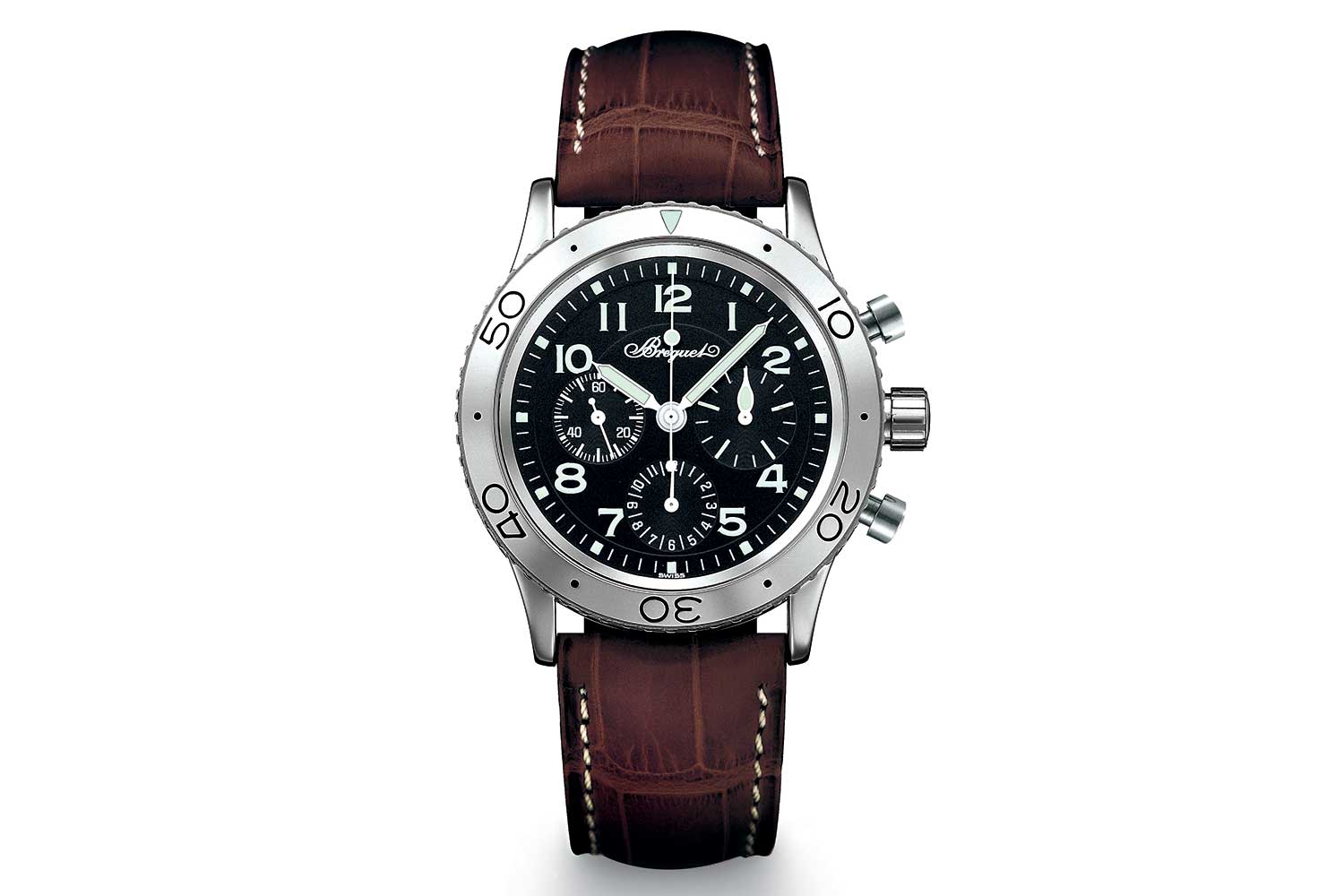
Breguet Type XX Aéronavale 3800
At 39mm, it took the core design of the civilian Type XX, including the famous star-shaped minute counter, and combined it with an opulent high-polished case and a conventional crown with, of all things, a gold cap. Inside the watch was a Lemania 1350 modified with a flyback module. This is a workhorse cam-operated automatic movement that went on to be the base of the Ebel 137. It being the decadent ’90s, the ref. 3800 was of course also offered in an 18K yellow gold version with a black dial, as well as my favorite, the rose gold version with a blue dial and a wonderfully over-the-top gold integrated bracelet. The ref. 3800 is immediately distinguished by the use of a fluted caseband all around the watch — the first time this feature ever appeared on a Type XX.
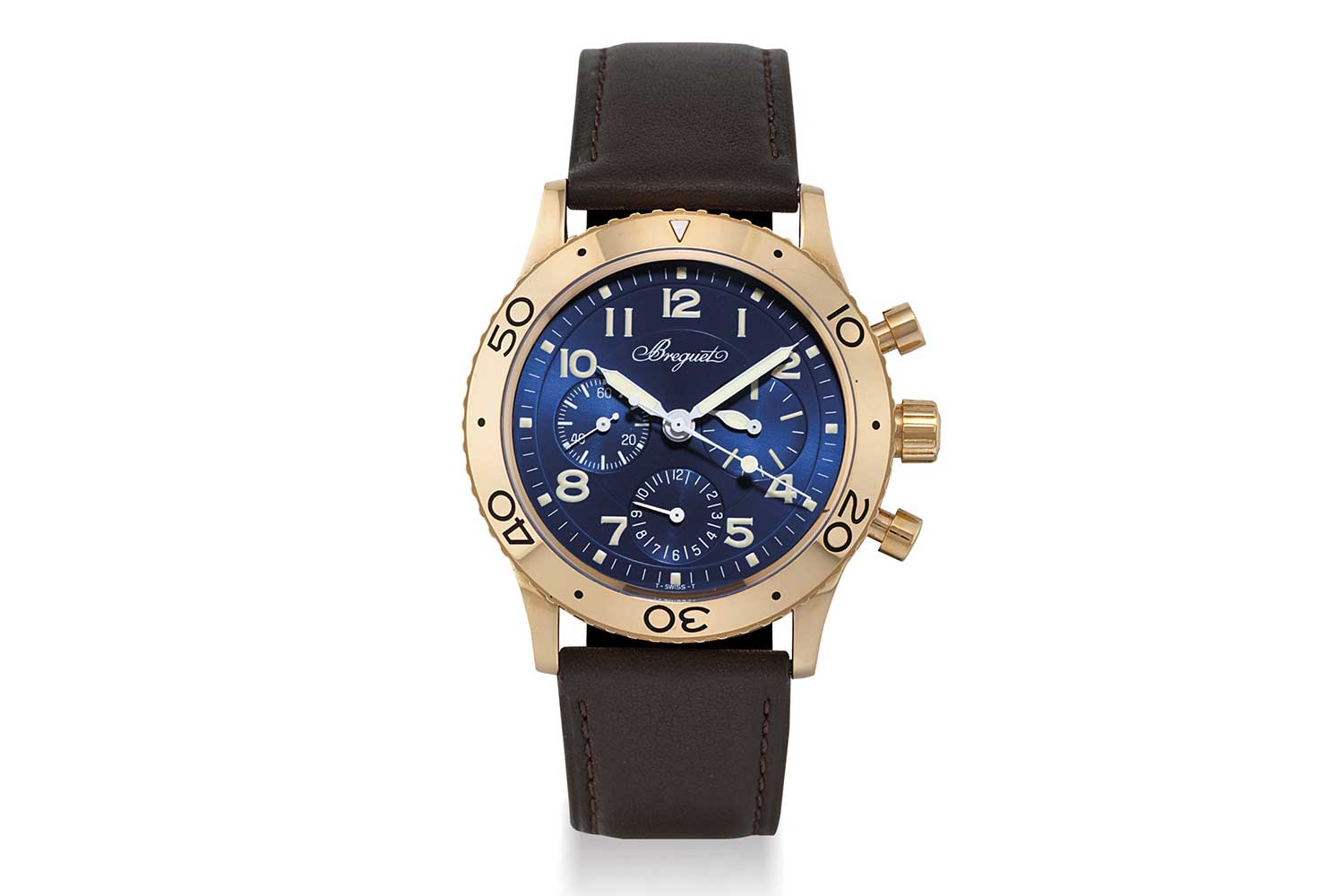
Breguet Type XX Aéronavale 3800 in rose gold and blue dial (Image: Christie's)
“In 1998, Breguet launched the famous ref. 3820 Type XX Transatlantique. This was made in some truly stunning examples. It was a period of rich creativity around the Type XX,” says a Marca. “There was a titanium version with a carbon-fiber dial, a platinum version with a blue dial, a rose gold version with a blue dial, a white gold version on bracelet with a white dial, and a white gold version with blue dial.”
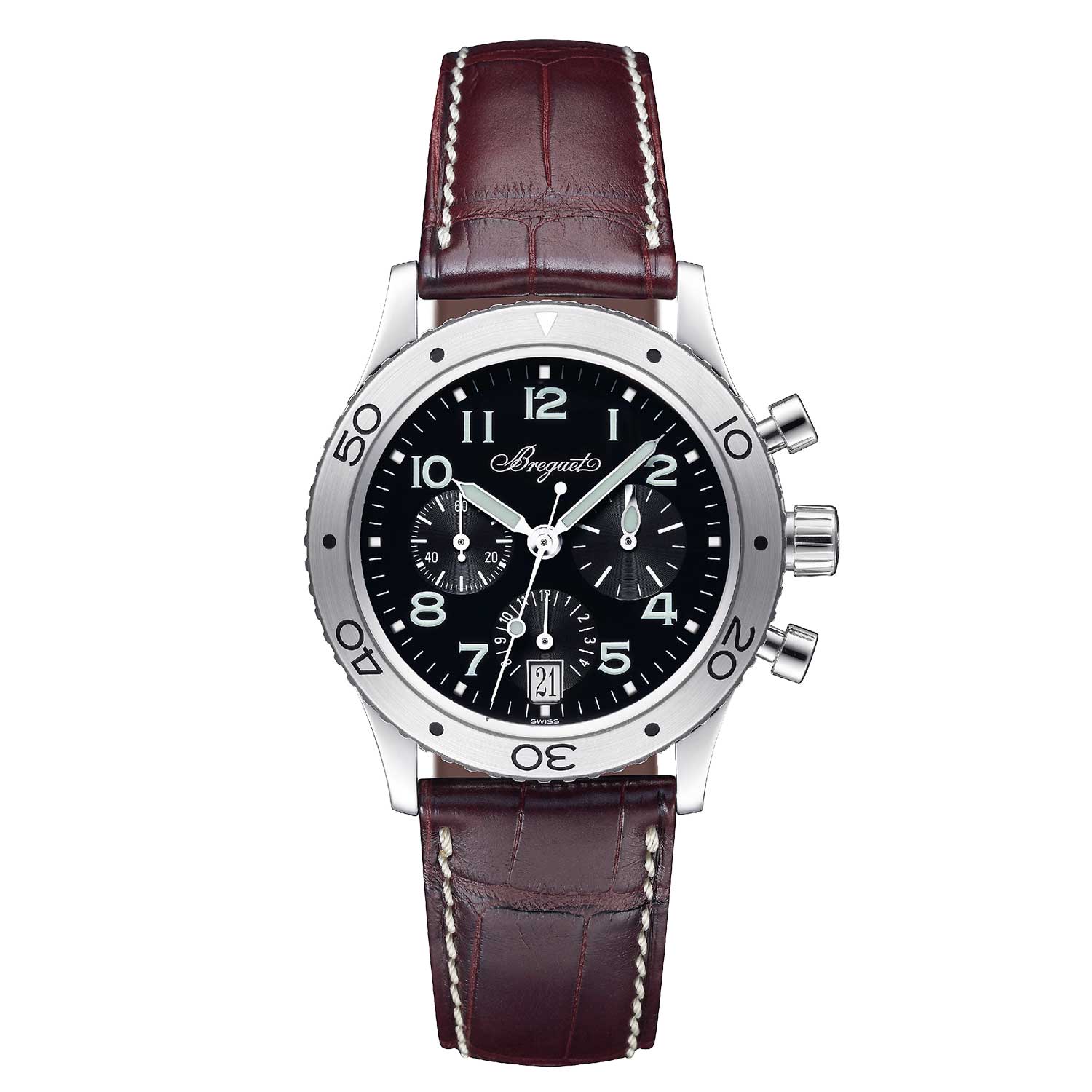
Breguet Type XX ref. 3820
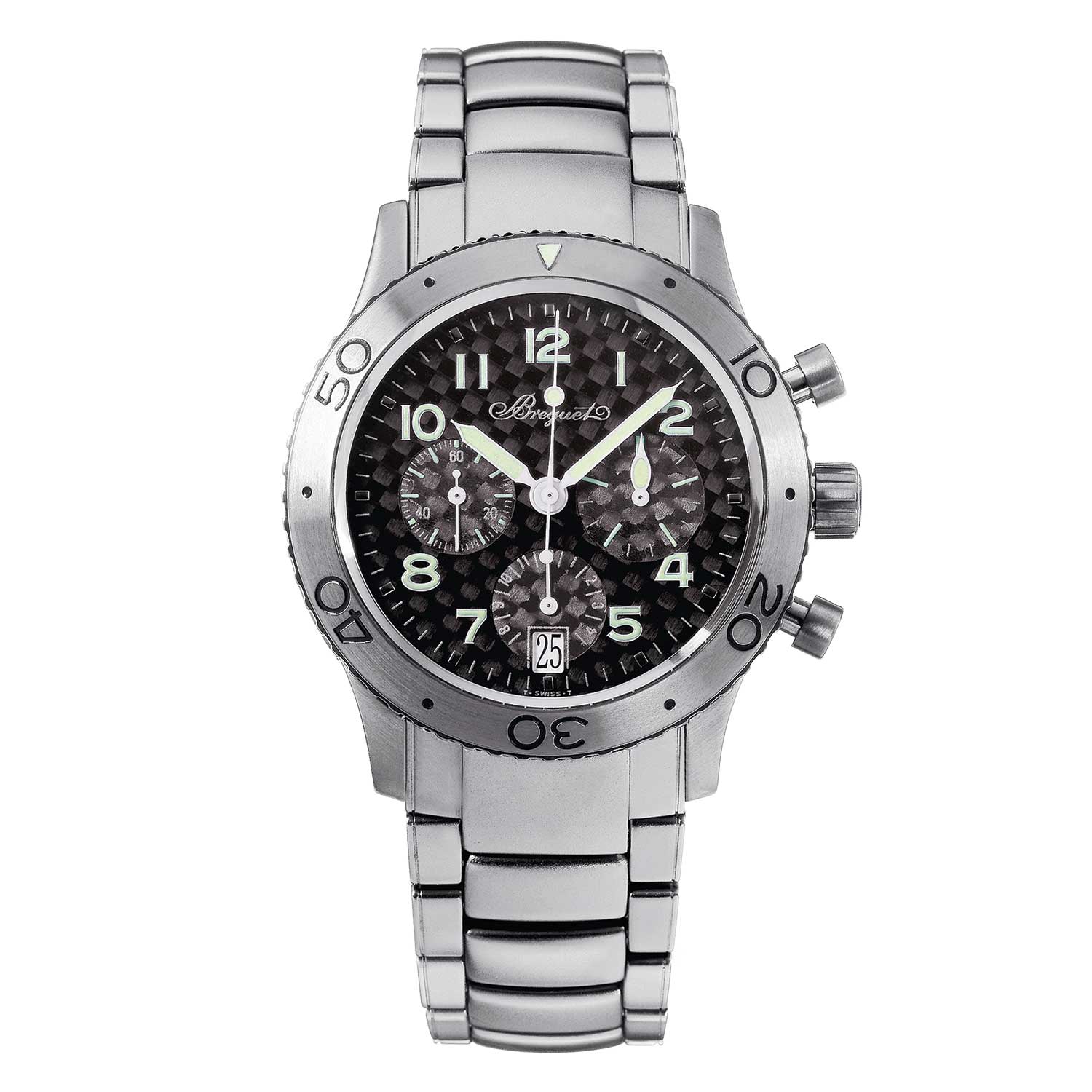
Breguet Type XX ref. 3820 in titanium with carbon fiber dial
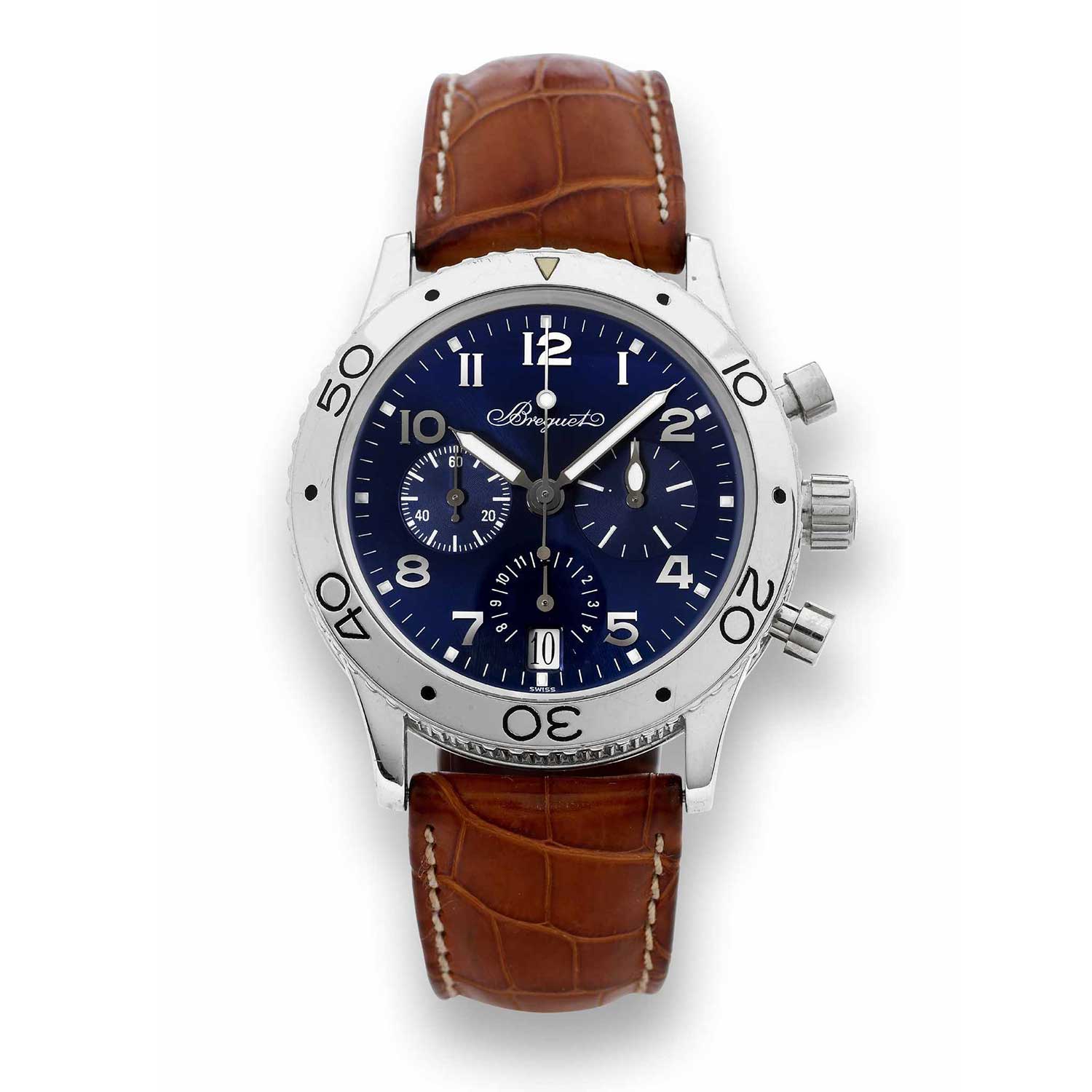
Breguet Type XX ref. 3820 in platinum with a blue dial (Image: Antiquorum)
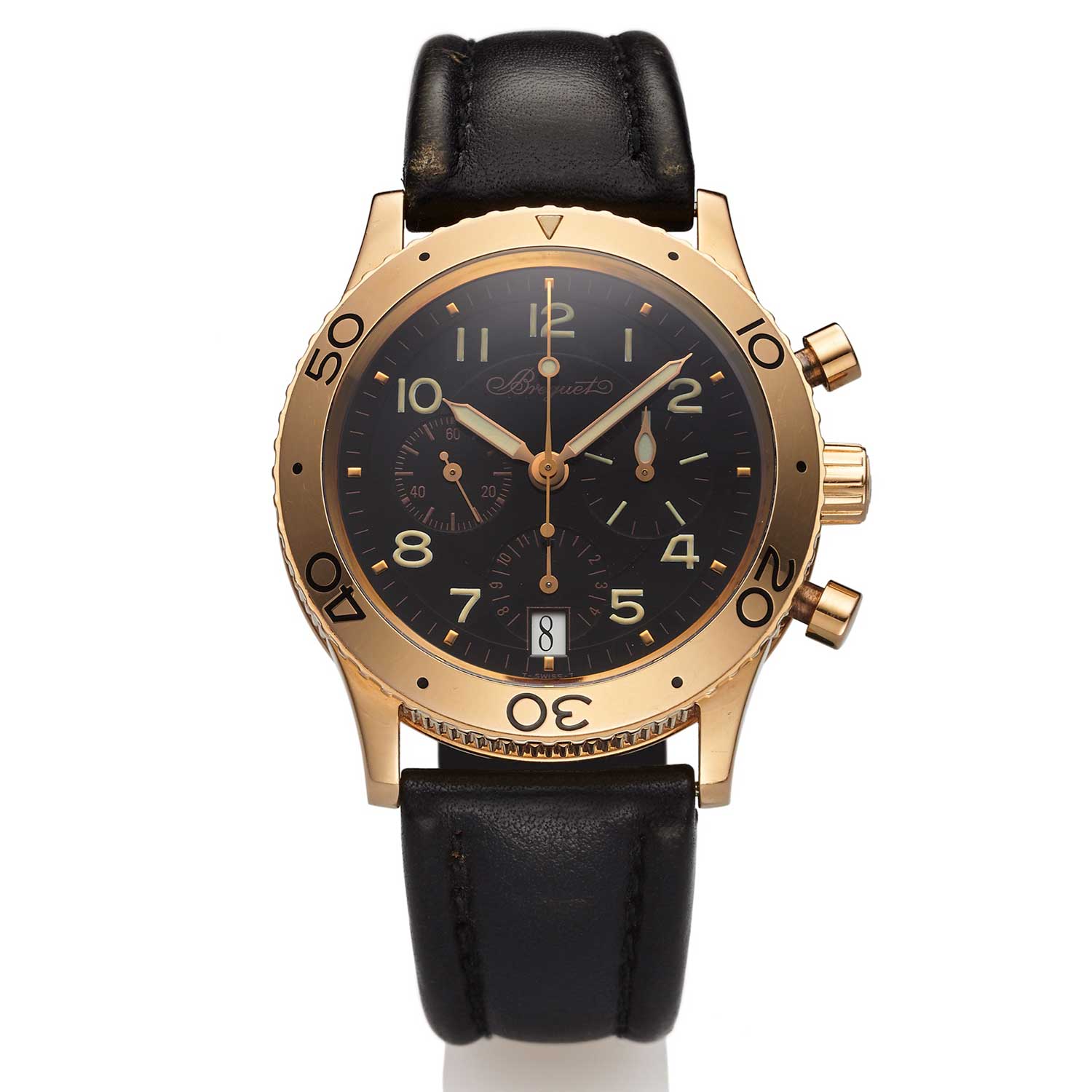
Breguet Type XX ref. 3820 in rose gold with a black dial (Image: Antiquorum)
Personally, my favorite reference from this era is the titanium ref. 3820 with the full titanium bracelet and carbon-fiber dial. Thinking about the late ’90s, this watch must have been positively space-age. But what’s cool is that these materials fit perfectly within the iconography of the Type XX, demonstrating the strength of its design. And pointedly, this watch — one of the most iconic and collectable neo-retro Breguet Type XX models — clearly features a date window.
Note also that from the launch of the 3800 onwards, Breguet had discarded the original uniquely faceted lugs of the Type XX. It is only with new Type XX Chronographes 2057 and 2067 that they have been reintroduced to the watch’s design.
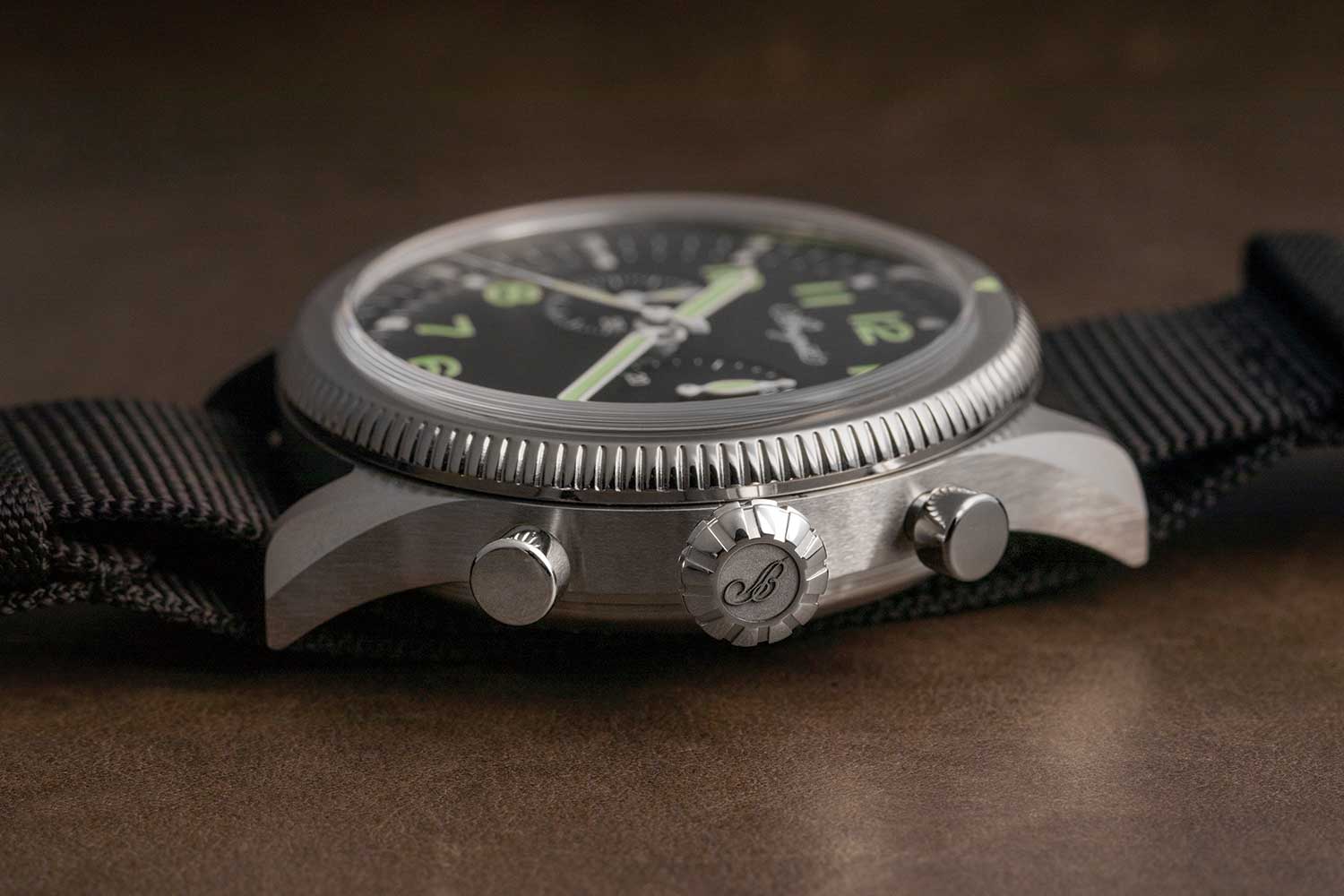
Breguet Type 20 Chronographe 2057
In 1999, Breguet was purchased by the Swatch Group and personally overseen by one of the greatest legendary figures of the watch industry, Nicolas G Hayek Under his tenure, Breguet launched the Type XXI ref. 3810, shifting the case size to a more contemporary 42mm in diameter and featuring titanium for its case material. The chronograph minute counter was now mounted to the cannon pinion, and in place of the minute counter at three o’clock was a 24-hour display for time.
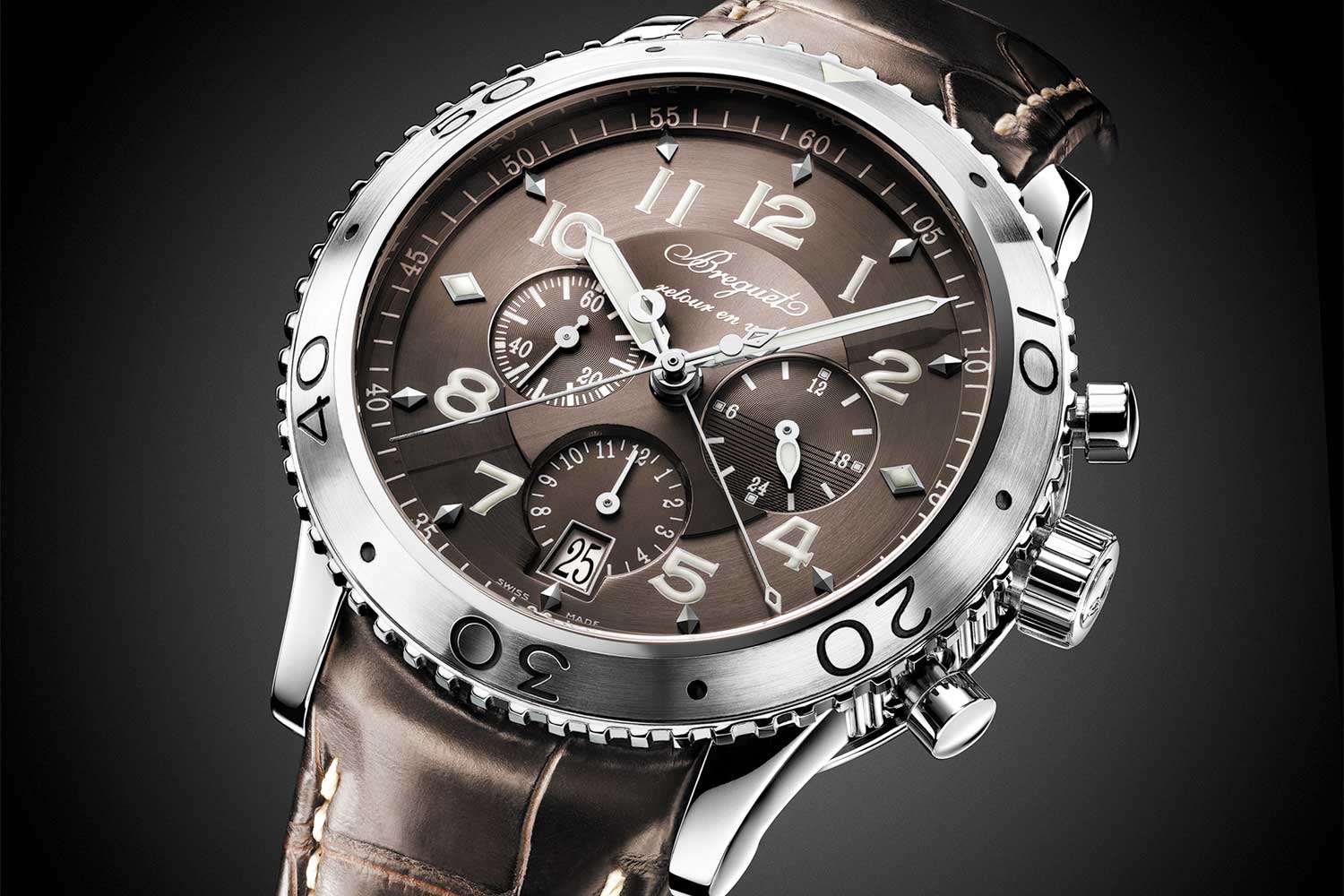
Breguet Type XX ref. 3810
One of the most sought-after versions of the Type XXI was the limited-edition ref. 3827 featuring a platinum case and a ravishing salmon dial with applied white gold Arabic indices — the ultimate luxe version of Breguet’s iconic aviation chrono. In 2010, Breguet released the Type XXII Reference 3880, a watch that featured an insane 10Hz escapement. For 2019’s Only Watch charity auction, Breguet made waves by unveiling a stunning pièce-unique Type 20 with a 38mm steel case, powered by a Valjoux 235 and a sublime bronze-colored dial.
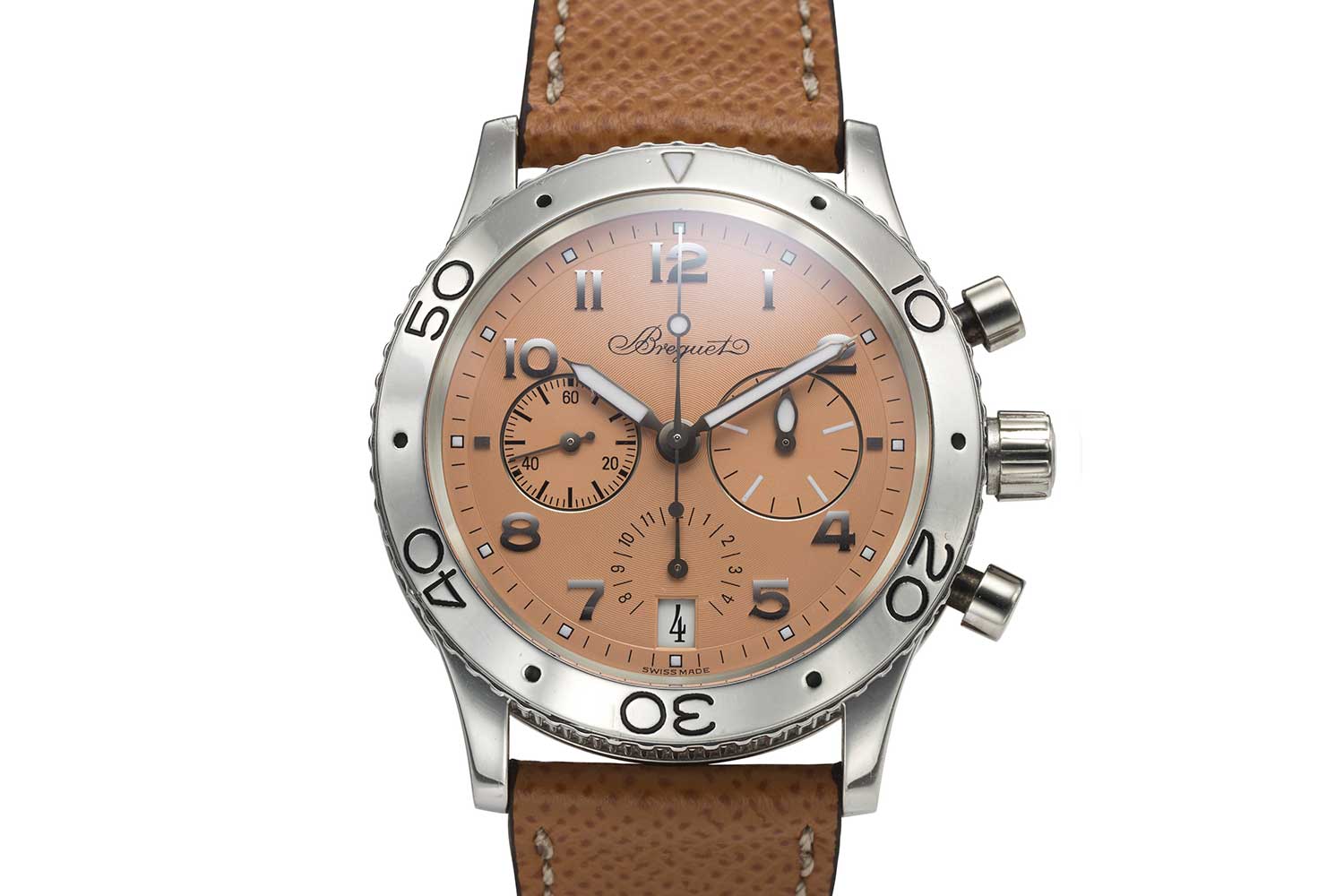
Breguet Type XXI ref. 3827 in platinum with a salmon dial (Image: Christie's)
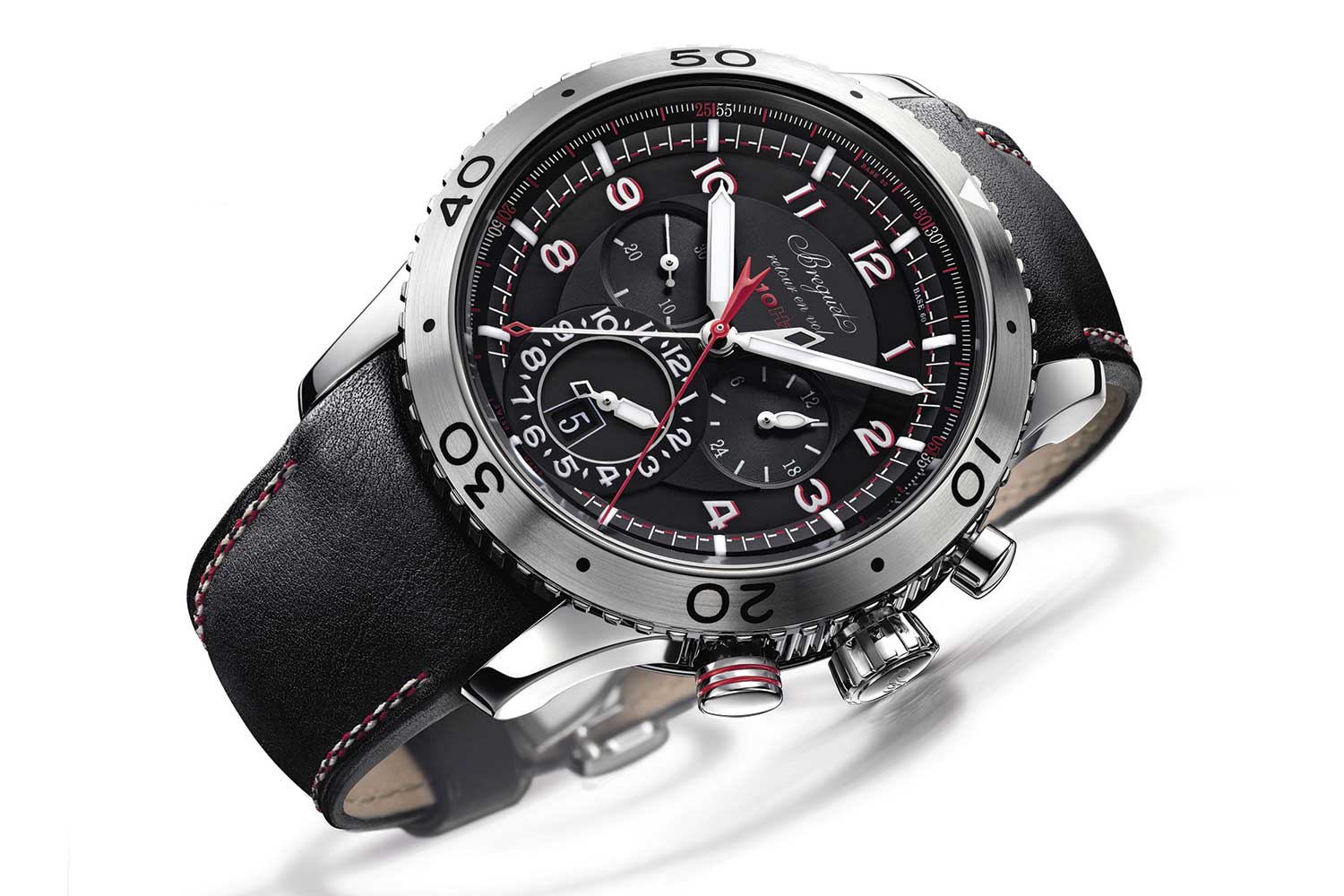
Breguet Type XXII Reference 3880ST
This watch was the only two-counter Type 20 military-style watch created by Breguet since they ceased producing the military timepiece for the French Air Force in 1986. Which is why the launch of the new Type XX Chronographe 2057 is such a big deal, because it marks the first time that a series-made military-style Breguet Type 20 has hit the market in almost 40 years. So now, let’s get to the launch that took place on June 6th of this year.
Why the Breguet Type XX is much better than you think
Today is June 23rd — yes, I checked the date window on my Vacheron 222 to ascertain that — and in the 18 days since the launch, a furor has raged over one specific detail regarding both the two-counter ref. 2057 “Big Eye” military version of the Type 20, as well as the three-counter civilian ref. 2067. “There has definitely been some polemic related to the subject of the date,” says a Marca.
We will get to that subject. But first, let’s look at the other aspects of the watch. Since a Marca is a watchmaker at heart, let’s begin with the heart of the watch or its movement. Because the new movement found in both of these watches is a massive step-up from the previous Lemania-based caliber. Both versions of the watch feature an all-new 5Hz column-wheel, vertical-clutch chronograph movement featuring a free-sprung balance wheel mounted on a full traversing balance bridge created specifically for the Type 20.
That is the incredibly badass Breguet caliber 728 (cal. 7281 for the military version), the perfect automatic chronograph movement for a modern watch. It features a full-sized, super-efficient winding rotor that provides the barrel with a full power reserve of 60 hours. “For me, any modern watch has be a timepiece you can put down on Friday and pick up on Monday, and it’s still keeping perfect time. With 60 hours of power reserve, this is perfect. However, it was not easy to guarantee this for a movement that beats at 5Hz,” says a Marca.
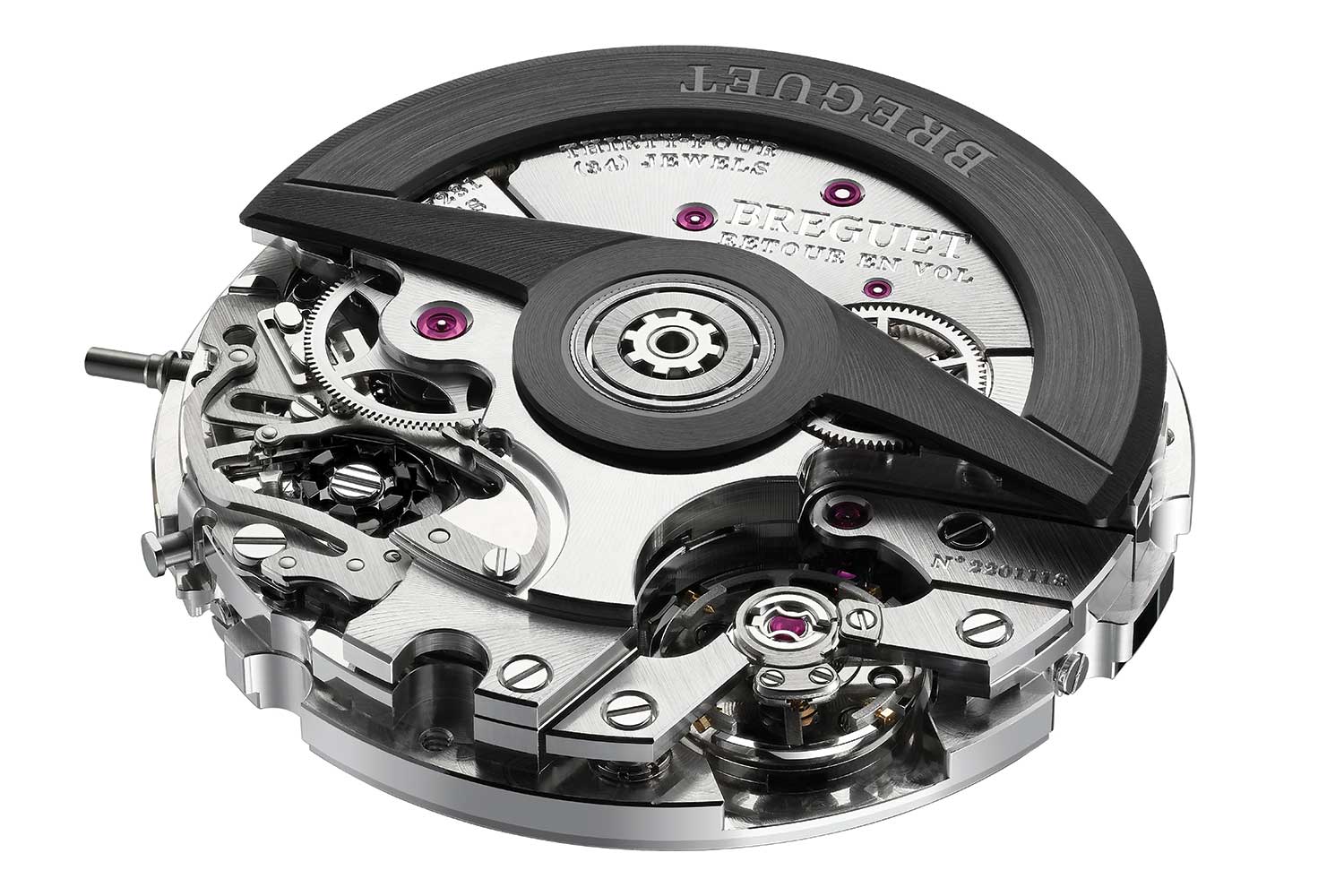
Breguet caliber 728
So here is the issue I have with internet and social-media chatter. Very often, it is based on snap judgements rather than any actual careful analysis. Because if the latter were the case, more people would have picked up on how downright fantastic this movement is. “The movement was the focus of four years of development,” says a Marca. “Let’s start with the vibrational speed of 5Hz, which is the optimal vibrational speed for a chronograph. It is more accurate as it is capable of dividing time to 1/10th of a second. But a watch that vibrates at 5Hz is also much less susceptible to the micro-shocks experienced by a wristwatch on a constant basis. Some watches achieve a faster vibrational speed by diminishing the size of the balance wheel. We didn’t want to do that and if you look at the movement, you will see that the balance is full-sized and provides an optimal inertia for stability.”
He adds, “For added robustness, the balance is mounted on a full traversing balance bridge instead of a cock that is only anchored on one side. And finally, it has a free-sprung variable inertia balance, meaning that its rate is adjusted purely using the screws on the balance and not with a regulator, which can change in position when it receives a violent shock. This movement is optimized to be an absolute workhorse.” A Marca smiles and adds, “But with the pedigree of a thoroughbred, as is fitting for Breguet.”
For chronographs, there are two different clutch systems, lateral and vertical.A Marca has selected the latter here because of its performance advantages. He states, “To begin with, a vertical-clutch chronograph can be left running all the time with no negative effect on the balance’s underlying amplitude. This is very important. The civilian version of this watch features a 12-hour totalizer. If you are going to leave your chronograph on for 12 hours, it is very important that it keeps time accurately throughout this period. A vertical clutch guarantees this. Second, in lateral-clutch chronographs, sometimes the drive wheel engages the chronograph seconds wheel so that they mesh tooth to tooth. This causes either a stuttering, or backward or forward jump, of the seconds hand when the teeth slip into place that was not ideal for a modern high-performance chronograph. We also created two movements with different bridges and gear trains to create a two-counter version with a 30-minute counter, and a three-counter version with a 15-minute counter and a 12-hour counter, because this is the correct way to do this, rather than insert a module and use a single base. This is the kind of authentic watchmaking we insist upon at Breguet.”
But that’s not all the time-keeping innovation you get in the movement. “One of the advantages we have within Swatch Group is our close relationship with sister companies such as Nivarox, the most important innovator in micro-regulation components,” explains a Marca. “We took a leadership position in the creation of silicon components. In the new Type XX, we used a flat silicon hairspring. The escape wheel and lever, including integrated pallet, are also crafted from silicon. This enables the entire escapement to run without lubrication. Furthermore, the watch is largely impervious to magnetism. Ninety percent of service issues today are simply related to watches being magnetized, and we wanted to ensure that the new Type XX is a watch you can put on and wear and not worry about magnetizing because of proximity to the myriad of electronic devices today.”
I love this, because even before getting to the design of the watch and the so-called controversy about the date, a Marca has, as a watchmaker, first ensured the incredible quality and integrity of the movement within his watch.
Let’s look at the Chronographes 2057 and 2067 up close, beginning with the case designs. Both watches share the same stainless steel case that harks back to the ’50s and ’60s — the heyday for the original Type 20 and Type XX. For the military Type 20-inspired 2057, you have a fantastic array of period details, including precisely the right oversized crown, smooth bezel and 30-minute chronograph counter in its bi-compax layout. The watch also features the correct Type 20-style sword hands and thin leaf-shaped seconds hand. Interestingly, both the continuous seconds and minute counter hands are luminous and are immediately distinguished by their size with the chronograph hand and counter more than twice the size of the seconds hand and counter, resulting in a “big eye” configuration for the watch. While examples of this exist in the Type 20, this configuration is, to me, more associated with the flat-crown civil aviation watches.
What is immediately striking about the 2057 is the use of high-intensity green lume that in normal light looks like green paint until you are in an ambient light situation and you see that your dial is bright enough to land a plane on. “This color gives a sense of vibrancy and jolt of modern energy to the dial. Then there is the date that resides between the four and five o’clock markers which, to me, is an intuitive place to put it. Look, I’m a watchmaker, and the idea of removing the six o’clock index, or cutting into the minute/seconds track and removing precision information bothered me,” says a Marca.
Pundits have also been rending their hair and beating their chests about the inclusion of the words “Swiss made” under the date window, as if their 14-year-old daughter had come home with a facial tattoo that read “No Ragrets.”. Get over it. The watch is made in Switzerland. Unlike many, many timepieces, it is entirely made in Switzerland — and it’s proud of it. I will, however, entertain comments that are specific to the military version of the watch, where a no-date version could have been feasible.
However, to expect Breguet to not only make two versions of this movement, but to also intentionally remove the date wheel from one of them, is asking a lot. Furthermore, the watch was intended to be a modern timepiece with vintage design codes, but it is a contemporary watch for the contemporary world. And personally, I’m over everyone’s obsession with all things vintage. I recently sold my Daytona 6241 Paul Newman, because compared to a modern Daytona, it is an absolutely lousy watch.
What I particularly hate is when people create “no date” watches and the crown has a functionless second position or dead spot. This is really, to me, intentionally making a watch less useful in order to live out some asinine fantasy that you are a Special Forces warrior who is so razor-focused on your mission that any peripheral information like the date would only distract you from your Captain Willard-like focus on dispatching Colonel Kurtz. The irony is that Willard’s Seiko SPB 153 had a date. But I digress.
Personally, I love Aston Martins and would love to own one, but I have no interest in driving an Aston Martin with a motor from the 1950s that would pretty much guarantee I would spend the majority of my time standing by the side of the road, bathing in motor oil. “I want to be very clear that we had no intention to make a facsimile of the past,” says a Marca. “If we wanted to, we could easily make a precise replica of the original watch. We even have the original movement, cases and dials for the military watches — though the dials are painted with radium, so I would not be able to use them today.”
He continues, “Would I make a small series of historically faithful 100-percent-accurate pieces? Yes, anything is possible. But this would be a tiny series, or even a pièce unique for charity. The objective with the new Type 20 is to create a thoroughly modern watch, something you can wear every day. Thanks to the vertical clutch, you can leave it running all the time if you want. Thanks to the use of silicon, it can be on your phone or computer and not be magnetized. Thanks to the 5Hz speed, it is super accurate and shock resistant. Thanks to the 60-hour power reserve, you can put it down on Friday and pick it up on Monday — and it’s functioning perfectly. And thanks to the date, you don’t have to reach for your phone all the time.”
A Closer Look At Type XX Chronographe 2067
Ok let’s get to the star of the new Type XX launch, which to me is the stunning Chronographe 2067. The watch is absolutely phenomenal. It has the correct flat crown, features the same beautiful lugs and original style case from the ’50s, and a wonderfully executed bezel with 12 hour markers that are high polished in deference to the 3800. This looks great, especially in contrast to the lugs that are brushed except for the mirror-polished extra facet that has returned to the Type 20 for the first time since 1995. The dial layout is sublime, with the three-counter configuration and famous luminous star-shaped 15-minute chronograph minute counter all perfectly executed, and the alpha hands are magnificent. And, of course, I love the placement of the date window here.
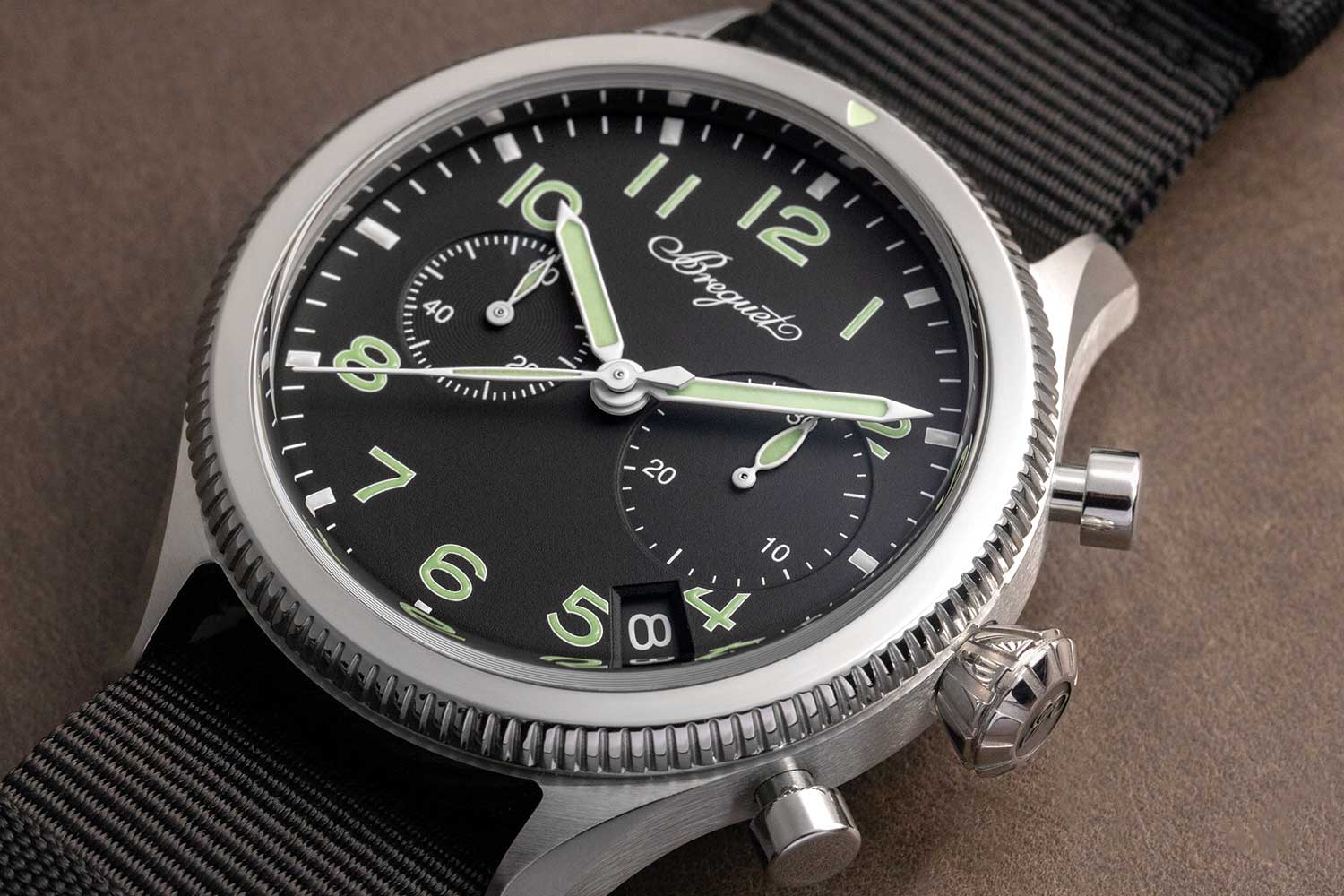
Breguet Type 20 Chronographe 2057
“With this model, I didn’t want the date window to cut into the chronograph hour counter as it did with the 3820 Transatlantic,” says a Marca. “Again, as a watchmaker, it would bother me not to be able to read the chronograph, so the placement between four and five o’clock was the most logical position.”
I totally agree. Amusingly, I have been rallying against the idea of vintage-colored lume for some time. But somehow, in the Type XX Chronographe 2067, it looks amazing. Is there room for improvement for the Type XX? Of course there is. Personally I would have liked to see the case size of the watch be between 39mm and 40mm. However, as mentioned, I am a watch nerd, and invariably what the nerds want doesn’t necessarily reflect the commercial tastes of consumers — especially those in one very specific territory.
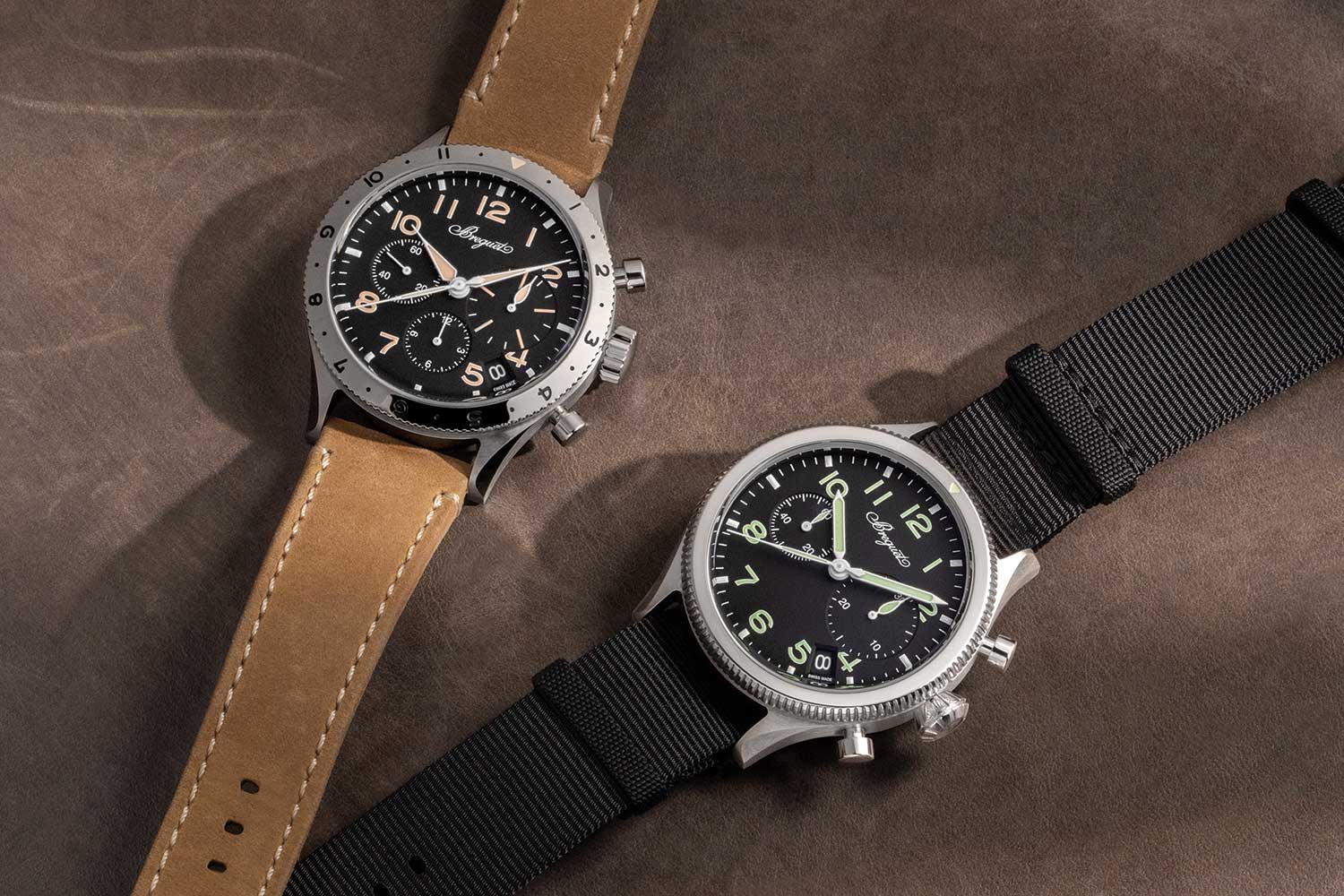
Breguet Type XX Chronographe 2067 and Type 20 2057
In recent Morgan Stanley reports, the US overtook China as the top country in the world for luxury Swiss watch exports in 2021 and 2022, largely due to Covid restrictions in China, which massively impacted consumer sales. In these last two years, Swiss watch brands have, as a result, paid deference to the prevailing tastes of the US market, which is one of the last holdouts for the shift back toward more classic-sized sports watches. Americans still think 42mm is the correct size for a sports watch, while the rest of the world, particularly Asia, much prefer something between 39mm and 40mm.
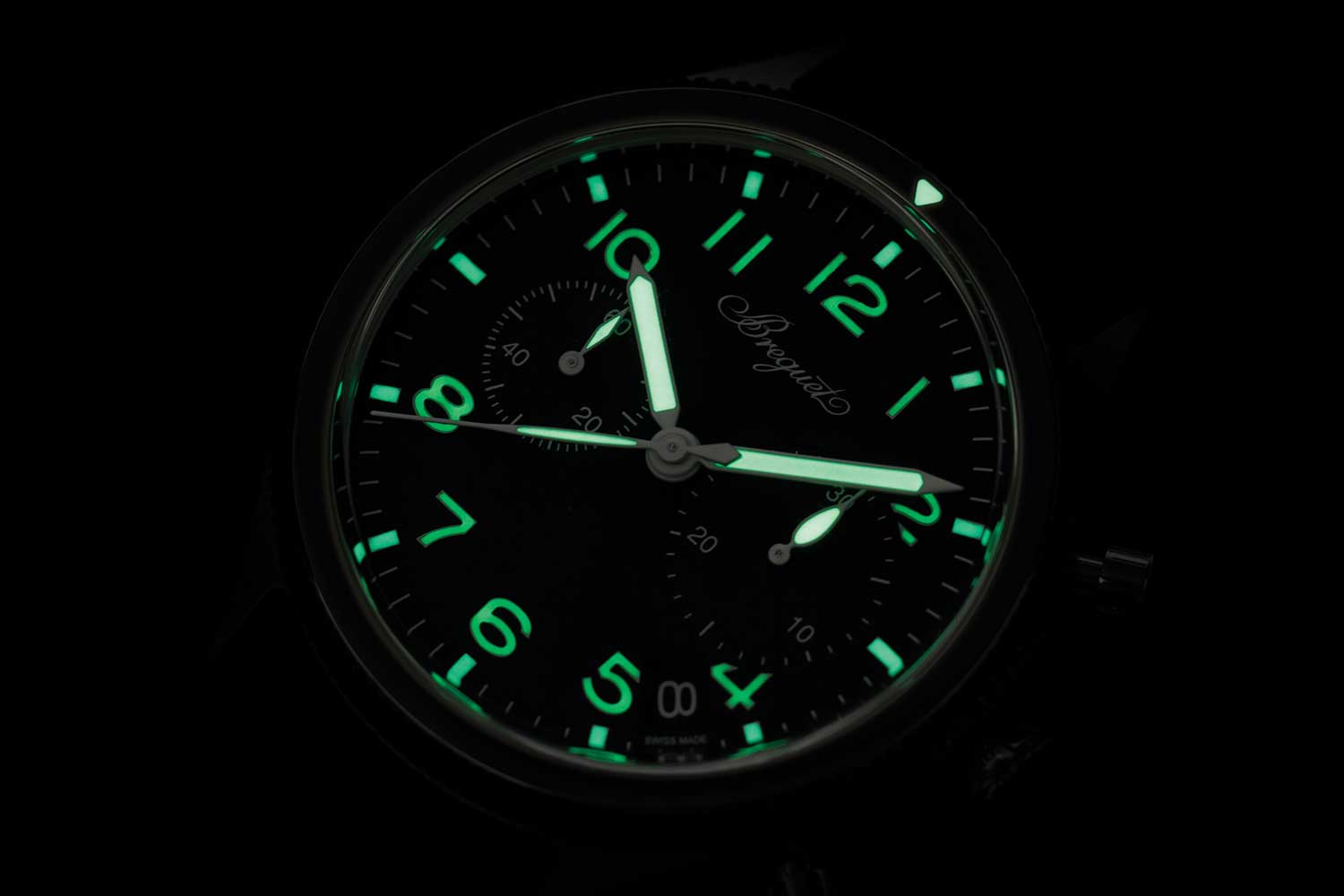
Breguet Type 20 Chronographe 2057
So I understand why it is that Breguet made the watch 42mm to appeal to the commercial reality of what is currently the world’s largest watch market. So to all the American watch experts upset with the fact that the watch is 42mm in diameter, if you want to blame someone, look in the mirror. It is your country that is the last holdout for oversized watches that’s the reason for the 42mm Type XX, in the same way that your market is the reason that the otherwise wonderful Grand Seiko Tentagraph chronograph is so damnably big at 43.2mm. J’accuse.
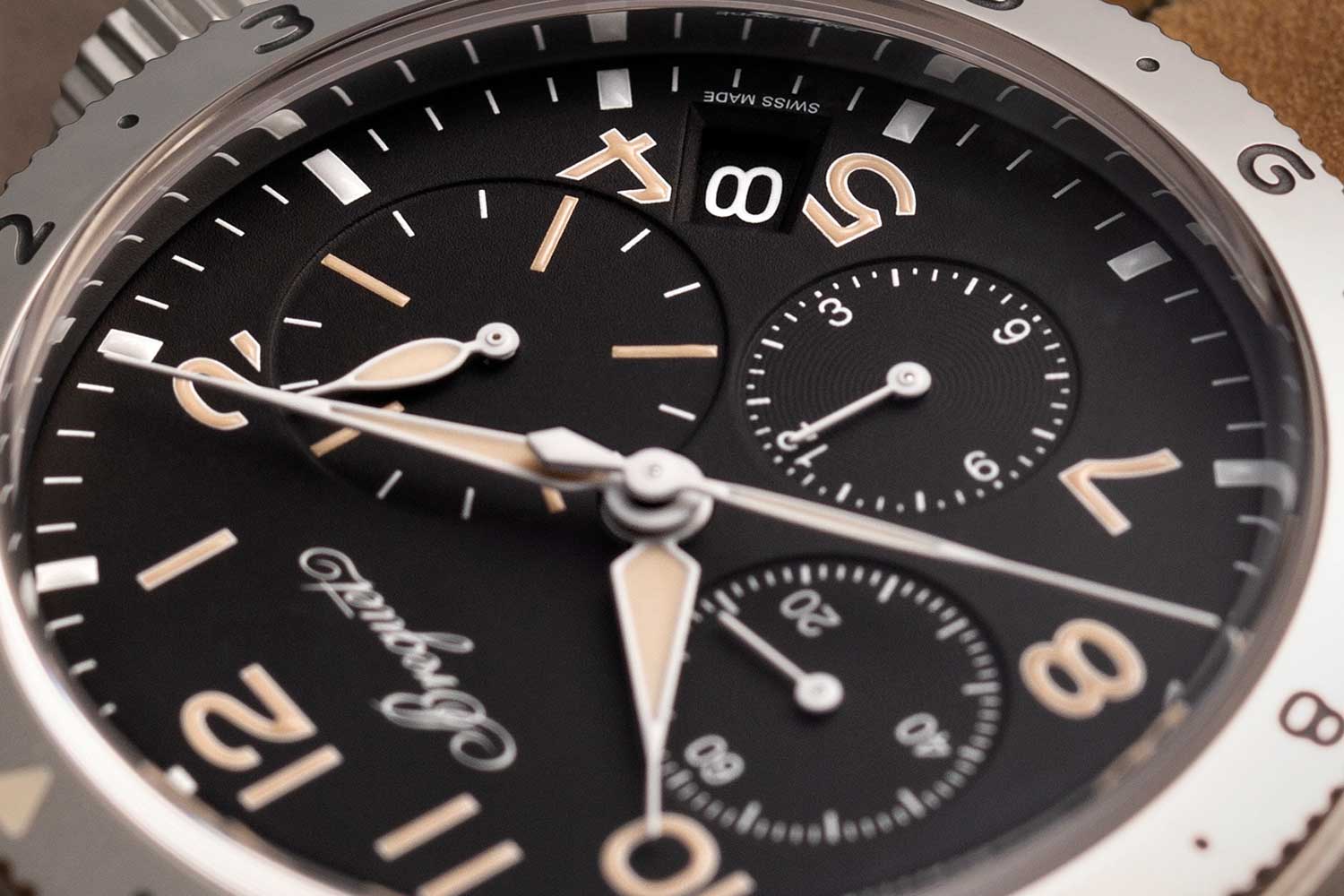
Breguet Type XX Chronographe 2067
But with the US market cooling down considerably and China on the rise again, it will be interesting to see who it will be that dictates the trend for the future — if anyone does at all. “The Type XX was created to be a family. These two watches are just the first two models presented and there is plenty of room in the future for additional models,” says a Marca. “There will definitely be variations in color, materials, and yes, absolutely sizes.” Looking at the size of the movement relative to the casebacks of the watches, it seems clear that creating even a 38mm version of the watch is entirely feasible and, with the mighty Swatch Group’s industrial power, relatively easy to pull off.
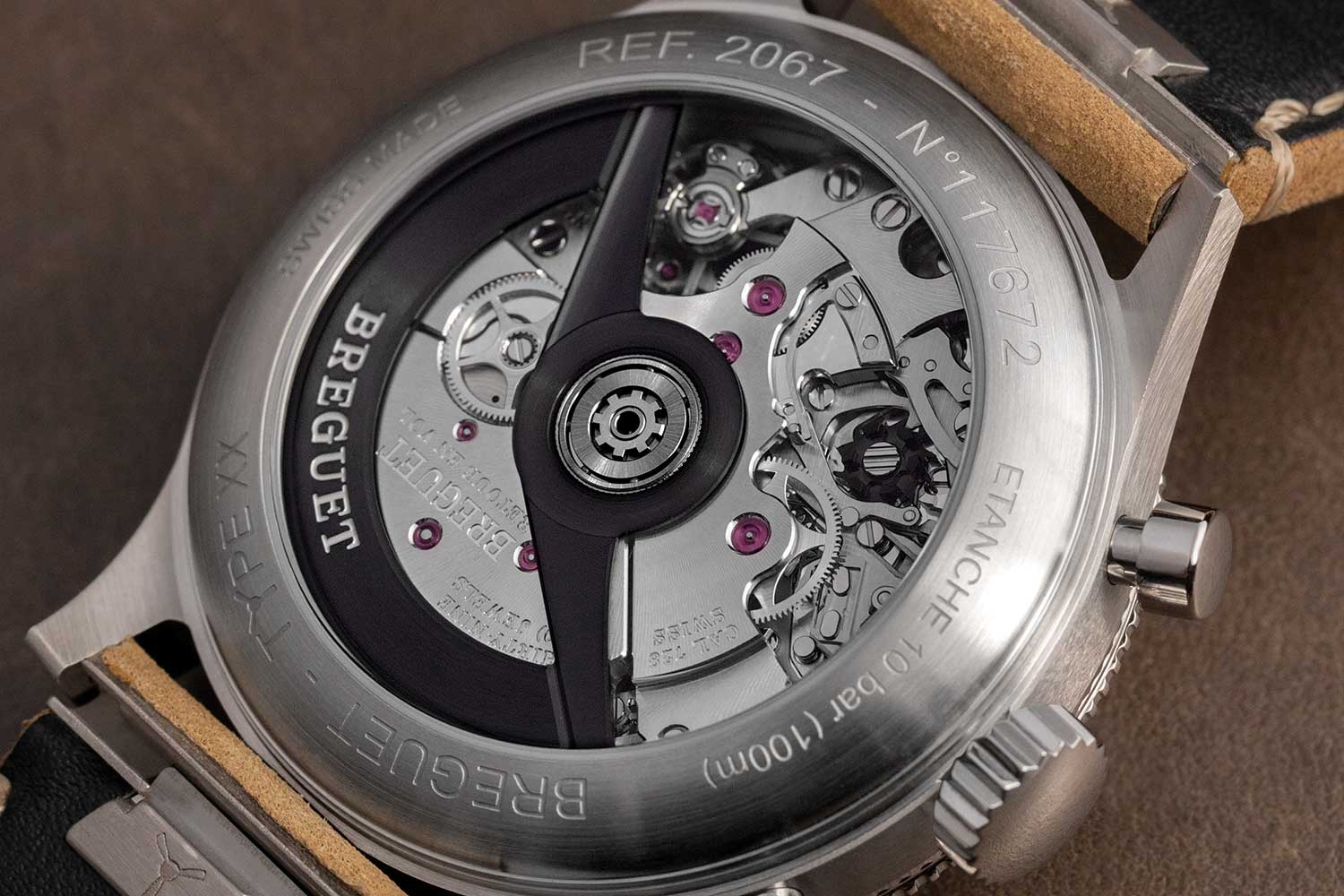
Breguet Type XX Chronographe 2067
So in the end, what do I think of the first two Breguet Type XX watches that mark the first collection launched under Lionel a Marca’s leadership? I think they are a great start and open the door to limitless possibilities for the future. Personally, I think the Type XX Chronographe 2067 is a ravishing work of masterful design and brilliant engineering. With its alpha hands, star-shaped minute counter, and yes, the date, it is the perfect civilian Type XX and a watch I would be proud to wear.

























